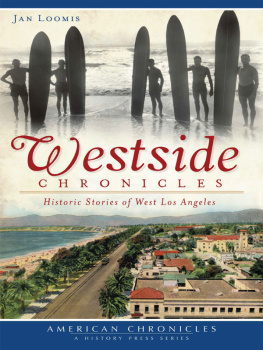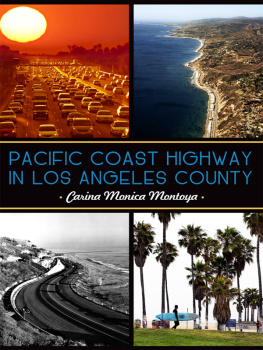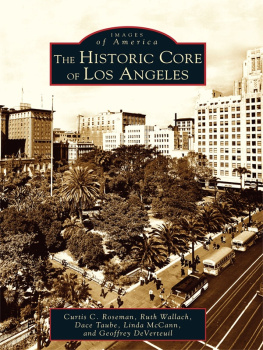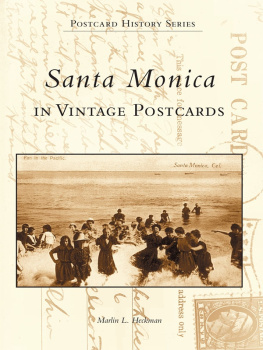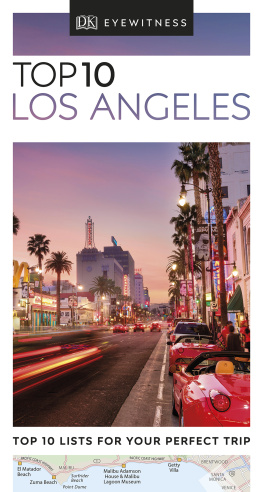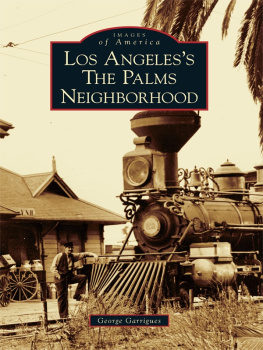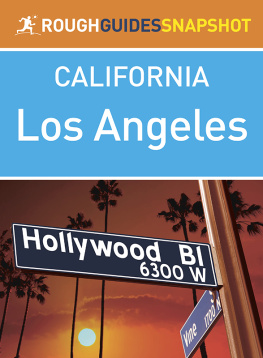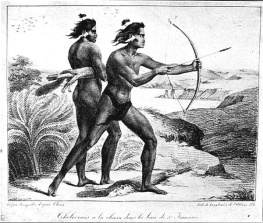

Published by The History Press
Charleston, SC 29403
www.historypress.net
Copyright 2012 by Jan Loomis
All rights reserved
Unless otherwise noted, all images are from the Santa Monica Land & Water Company archives.
First published 2012
e-book edition 2012
Manufactured in the United States
ISBN 978.1.61423.739.6
Library of Congress CIP data applied for.
print ISBN 978.1.60949.623.4
Notice: The information in this book is true and complete to the best of our knowledge. It is offered without guarantee on the part of the author or The History Press. The author and The History Press disclaim all liability in connection with the use of this book.
All rights reserved. No part of this book may be reproduced or transmitted in any form whatsoever without prior written permission from the publisher except in the case of brief quotations embodied in critical articles and reviews.
For all of those who will come after and create their own stories about West Los Angelesmay they maintain what has been done as they build their own vision across the area for its future residents.
CONTENTS
ACKNOWLEDGEMENTS
In doing the research for this book, it became apparent that there is considerable overlap between every part of West Los Angeles (WLA) and its history. Even today, the original five ranchos remain a potent influence on the land and its use. The original developers competed against and inspired each other. They shared many common goals. The homeowners brought ideas from former homes and other areas. The architects influenced each other and the styles of homes and buildings worldwide; the athletes who used the beach clubs and swam in the surf went on to compete on the international stage. Surfing slang invented on these beaches is heard everywhere. The movies using WLA as a backdrop impacted viewers across the nation and the world.
However, no one book or article has tried to tell the saga of West Los Angeles (as defined by the five ranchos that define the area) as a wholeto show the way each developer influenced the others; how the landscape reflects their joint interests and their joint goals; how the decisions of one affected all of the others. How the weather and the perpetual resort environment determined the look and feel of the area. How popular sports shaped its development. How much WLA has influenced the rest of the country and the world.
This book is an attempt to show these connections and interactions in a way that helps the reader see the bigger picture and understand why West Los Angeles has become such an important part of Los Angeles and such an influence on the nation and the world. It tells the story of the players, the landscape, the builders, the streets, the amusements and the impact of the early movie industry.
Much of the information for this book was found in the Santa Monica Land & Water Company archives (SML&WCo)a large repository of business papers, photographs, ephemera and other records about business in West Los Angeles. Local history books about Pacific Palisades, Brentwood, Playa del Rey and Santa Monica offered many helpful insights. Articles written for Previews magazine and other local publications by local writers were also very helpful. So were the online histories of the various institutions and historic sites located in West Los Angeles.
My heartfelt gratitude to those who personally helped me piece together this story and the images used to illustrate it, especially: Dorothy Gillis Loomis, Arthur Loomis, Adelaide Gillis McCormick, Peggy Loomis and Francis McCormick Armstrong. Their firsthand accounts and memories of events have been invaluable. Lois Flagg deserves much gratitude for preserving the SML&WCo archives through thick and thin over her fifty-five-year career with the company. Local historians Betty Lou Young and Randy Youngs books are important resources on several Westside areas; Ernie Marquezs books are a treat to look at and provide valuable information about his family and Santa Monica Bay. Dace Taube, archivist at the University of Southern California Libraries, and Cynni Murphy, at the Santa Monica Public Library, were both invaluable resources for information and images. Please see the bibliography for a complete list of books and sources used for research.
Finally, special thanks to my husband, Bob Loomis, for his meticulous research about the various families who developed West Los Angeles and their relationships; for his help with the SML&WCo archive research; for his ability to scan a photo or tract map; and finally, for his patient reading of the drafts of this book and for his many suggestions and improvements. It could not have been done without you.
The sweep of this book is broad, and while I have done my best to get it right, Im sure there are errors. Please let me know about any mistakes so that I can correct the record.
INTRODUCTION
We all do itdrive the streets, go in and out of the buildings, navigate the curves, enjoy the beach, love the weather, find pleasure in the views, jog and walk on the streets, enjoy the tennis, golf and surfingbut we dont spend any time at all wondering how it all got there. Who picked the names for the streets; why are the curves and intersections where they are; who created the homes and buildings; who first saw the views; who first played tennis and golf on Westside courts and courses; who made surfing popular.
Although it is hard to believe today, West Los Angeles was once more than sixty-eight thousand acres of open landscrub brush, running streams, a few trees, small game and dust. Native Americans roamed it first and then gave way to the rancheros who brought their cattle, horses and agriculture to the land. Neither group changed the landscape much; it remained mostly open space. Then the capitalists and the promoters arrived and began to transform the land into neighborhoods and communities. In the process, they added infrastructure, landscaping and new contours to the geography. Their vision changed the open land into the West Los Angeles of todayan affluent suburb, home to over a quarter million people who live, work and play in pleasant towns and neighborhoods.
The names are recognizable, memorialized in street names, on beach signs, on monuments and in the names of the communities they built. The land conforms to their visions, and the recreation and sports facilities they created are important reasons to live in West Los Angeles, but the stories of how it all came about are gone from local memory.
In order to tell these tales, it was necessary to reconstruct the sequence of events and the intertwined relationships of the people who shaped the area. Five ranchos were granted to five different family groups. They were the first to alter the landscape, and the contours of their ranchos still shape West Los Angeles today. The ranchero families intermarried with each other and with other Californio families, tying the area to Los Angeles. The sales of their land to the capitalists began the next phase of the areas development. The buyers were also friends and associates and had family ties to each other. They worked together, and their names appear over and over on the letterheads, deeds, tract maps and legal papers related to the development of West Los Angeles.
Common themes emerged as the story began to develop. At first, the lands distance from Los Angeles and the San Gabriel and San Fernando Missions was an advantage. The priests were not able to interfere with the owners, and the city had little interest in the area. Later, the distance worked against the developers, especially during the Great Depression. Then it was an asset again as LA dropped under a murky cloud of smog. The weather in West Los Angeles is spectacularcooled by sea breezes and dewed by fog, with mild temperatures and many days of sunshine. The everyday resort environment attracted a steady stream of residents, even during Los Angeless historic real estate busts. The health benefits of the mild climate drew many residents from other areas of the countryasthma and other respiratory ailments persuaded both residents and developers to live and invest in the area. The climate engendered a yen for outdoor sports and encouraged an open architecture for homes. Plants thrived, and horticulture was a popular hobby. The area quickly became a lush garden environment. The movies discovered the weather and added their glitz and glamour to the region. All these advantages led to ever-increasing real estate values for the land.
Next page
